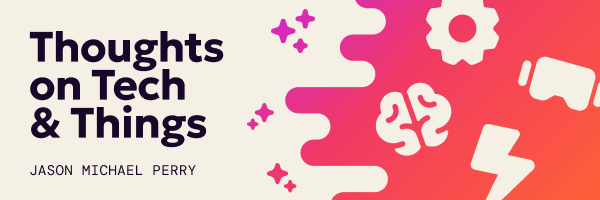Issue #11: Is the Metaverse wanted dead or alive?

Howdy, Meta is back in favor with investors after the successful launch of Threads, and quarterly revenue is up by 11%. With a rosy report months after Meta’s first quarterly decline, you might be surprised that its Reality Labs, known for Virtual Reality (VR) products like the Meta Quest, brought in $276 million in revenue on a $3.7 billion loss for the quarter. Mark Zuckerberg says AI is the number one focus at Meta, but he is unshaken by the mounting losses to build his vision of the “Metaverse.”
“We’re here to build awesome experiences that help people connect. I think helping to shape the next platform will unlock that in a profound way for decades to come.”
Meta has had zero success with hardware, its phone was a flop, and it recently discontinued its Portal product. Still, Zuckerberg realizes Facebook and Instagram have been relegated to apps on a platform, forcing them to play by the rules of those platforms. Apple’s increased focus on privacy has shaken Meta to its core, costing it $10 billion, and has made owning the next platform crucial for its long-term future. Under that lens, you can quickly see why Meta invests so heavily in Oculus and VR. Meta’s goal is to cement a foothold in the platform wars to come. Apple’s launch of Vision Pro injects fresh competition into the market, and for Meta to succeed, it doesn’t necessarily have to outperform Apple. It simply needs to secure the second position.

Is the Metaverse dead? This week I’ll dive into what’s happening in that space, share our experiences moving to the Metaverse, and I’ll invite everyone to visit our virtual office and listen to some AI-generated music, but first, here are a few of my thoughts on tech & things in the news:
⚡️Last week, Amazon hosted AWS Summit in NYC, and the Mindgrub team and I were in attendance. In addition to great sessions, AWS used the keynote to make some AI-focused product announcements. I’m excited about adding new foundation models to AWS’s Bedrock product and entity resolution. Foundation models allow you to sub out the Large Language Model (LLM), powering Bedrock with those from Stability AI, Anthropic, or others. Entity resolution uses AI and pattern matching to connect data across large enterprises and can help build a better footprint of whom a customer is across a distributed set of systems.
⚡️Porsche’s new CarPlay app looks amazing! The app expands the features of CarPlay by extending what you can do in its own native CarPlay application, and it also adds enhanced Siri support for controlling the A/C or the vehicle’s internal lights. Apple is expanding CarPlay with some automakers, but this seems like a great way to expand beyond what Apple supports. Hopefully, others will follow this lead for CarPlay and Android Auto.
⚡️The BBC joined the Fediverse with an experimental new Mastodon server. Each node or Mastodon server owner in the Fediverse sets their own content moderation rules, giving the BBC greater ability to moderate its reporters and comments directly. Could this become a model for others to follow?
🥳One more week! I’m hosting an AI-generated concert with the musicians of the Baltimore Symphony Orchestra on August 9th at the Meyerhoff in Baltimore. Check out some recent coverage on WJZ and WBAL, and more importantly, buy tickets! I can’t wait to see you.
Back to virtual reality…
Virtual reality is an incredible experience that feels revolutionary. The first time I placed a headset over my eyes, I was instantly transported into a new world and could feel in my soul that this technology would change everything. I’m also an early adopter with thick skin for bugs and am always willing to overlook the growing pains of technology.
Like the science fiction that inspired it, VR and the Metaverse can blend IRL (in real life) and virtual spaces ranging from whimsical fantasy worlds to alternate recreations of our world. The appeal for this virtual escape is not new, Second Life has existed for 20 years, and if you play video games, MMORPGs (Massively Multiplayer Role Playing Games), and World of Warcraft (WOW), a 19-year-old game with 8.5 million monthly players. Each platform combines gameplay, shopping, and social interaction to create a world you can mold to your interests. The Metaverse takes these same worlds and adds immersion to trick the mind into feeling that you have warped or transported into this fantasy land.

When Mindgrub moved to the Mindverse, we chased the dream of immersing our team in a different world, but doing that required us to overlook the realities of VR. Headsets felt heavy and bulky and quickly became sweaty, tasks like typing got old quickly, and many gestures tired your arms. The experience could be excellent in bursts, but the hardware did not work for an 8-hour day. Worse, many of the Metaverse worlds are exclusive to VR or favor users in a VR space over mobile or desktop. This led us to Mozilla Hubs, a mixed immersion world that allows users to join using a web browser and interact at various levels of immersion. You can zip around on an Oculus VR headset or just as quickly on a phone’s web browser or desktop.
Apple’s vision of mixed reality (XR) aligns with these ideals helping you stay present but allowing you to move into deeper levels of immersion. Services like FaceTime allow you to interact with users across device types but still offer enhancements to collaboration for those in a shared virtual space. Apple understands that a productivity device you wear for hours must be comfortable, and I’m hopeful it feels like wearing glasses. Apple also added downward-facing cameras to allow gestures and interactions without holding your arms and appears to make it easy to connect an external Bluetooth keyboard and mouse.
This approach of inclusiveness seems to have influenced Meta, as Horizon World’s mobile app will make its VR social platform available to all types of users, hopefully expanding its reach. This inclusion is key to expanding Metaverse support and reducing entry barriers. The more users can jump between levels of immersion, the easier it is to promote increased collaboration, and naturally incentivize the potential gains that arise when teams fully commit.
So is the Metaverse dead? 100%.
Apple calls XR spatial computing, and even if that name does not stick, the word Metaverse has quickly gone out of vogue. The word Metaverse is dead, but what’s not dead is the ideals of the Metaverse. Spatial computing and our ability to merge IRL and augment it is unquestionably the future. Today Apple and Meta are laying down a foundation that may take years to catch on. Still, both are committed to investing and creating something attractive to businesses and developers. The Metaverse was never meant to be a singular place but a world of connected apps or universes, similar to the Apple App Store or distributed group of social networks, like the Fediverse. Long live the Metaverse, the Metaverse is dead!
-Jason
p.s. Could the Fediverse become the new Metaverse? Meta’s interest in using the ActivityPub protocol to bring its Threads social media application to Mastodon makes you wonder if it could be the core of a virtual social network that lets you take your things from VR space to VR space. I’m not alone with these thoughts, as Immers Space and several others are exploring what that could look like.
X Marks the Spot

Elon Musk changed the name of Twitter to X, and to celebrate by erecting a large x sign atop the headquarters. Of course, this all happened without the correct permits, and now faces threats of fees or removing the sign altogether. (Guess what sign has been removed)
